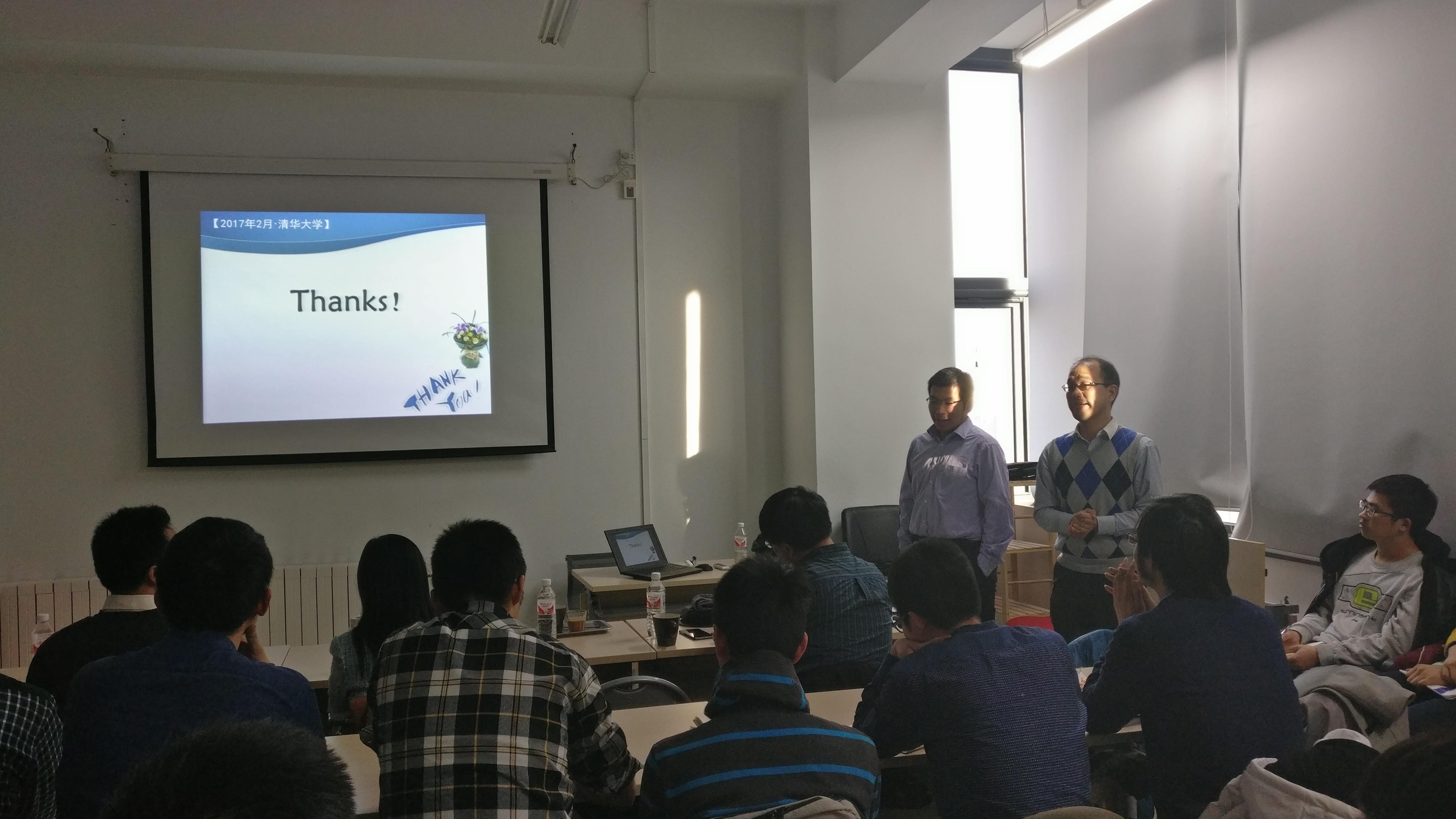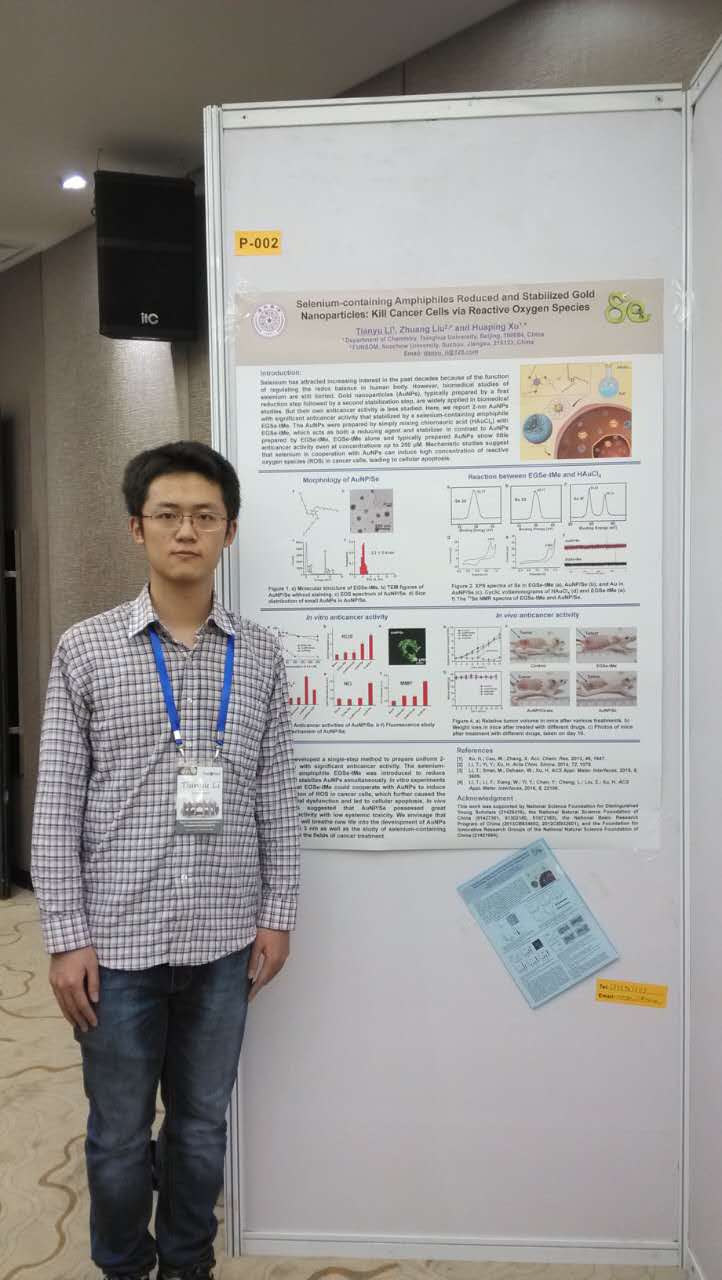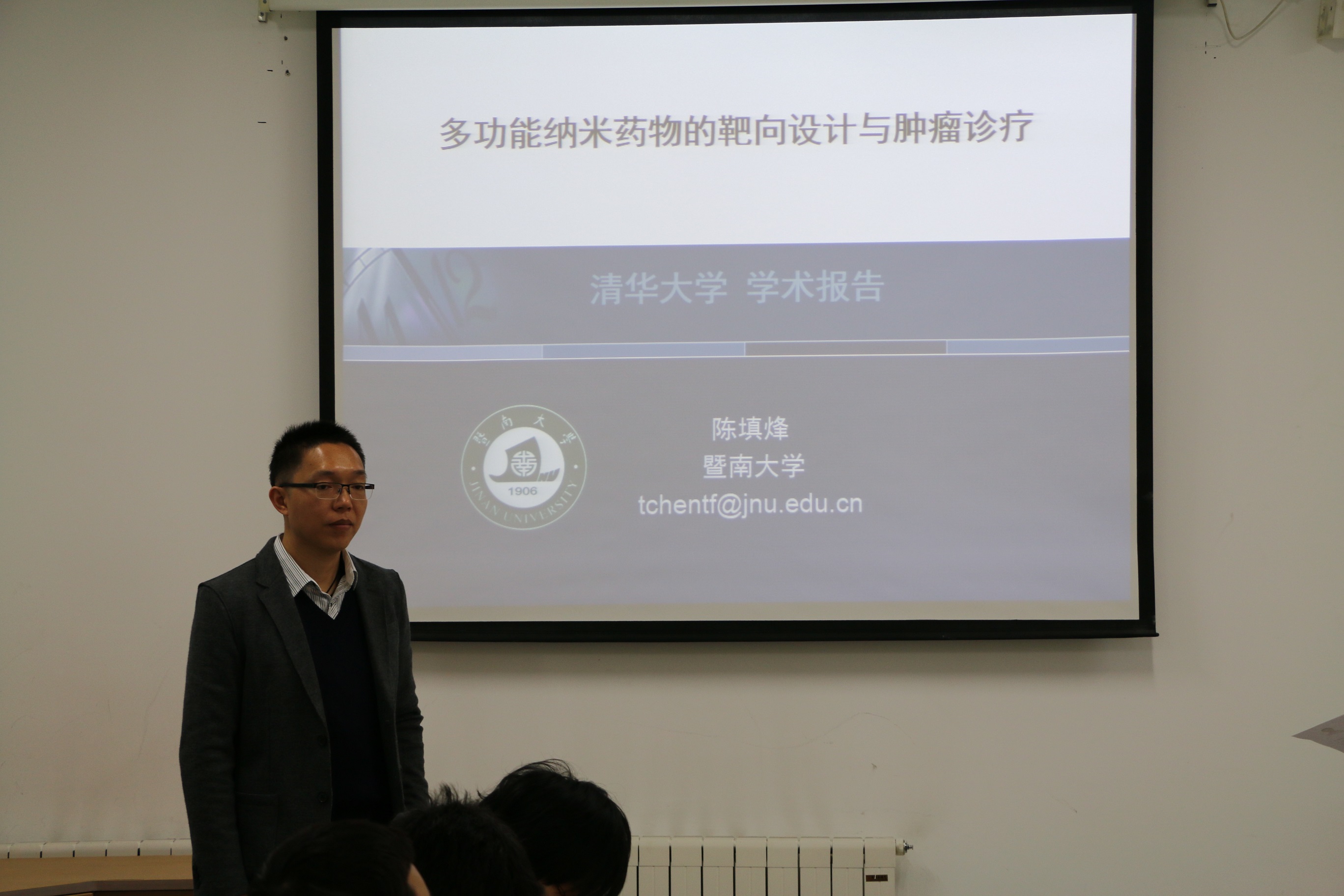Shaobo Ji, Hicham El Mard, Mario Smet, Wim Dehaen and Huaping Xu
Sci. China Chem., 2017, 60, 1191-1196
Macrocycles possess potential applications in supramolecular chemistry and biosystems. Thus development of new kinds of macrocycles is of significance. Herein, novel macrocycles containing Se-Se/Se-S bonds were synthesized via transformation be-tween selenium related dynamic covalent bonds. A monomer containing two ebselen moieties was synthesized (M1). The Se-N bonds in M1 was reduced by dithiothreitol, forming Se-S linked dimer (D1). To realize the transformation from Se-S bonds to Se-Se ...
More
Author: wanglu
Near-Infrared Light Stimuli-responsive Synergistic Therapy Nanoplatforms Based on the Coordination of Tellurium-containing Block Polymer and Cisplatin for Cancer Treatment
Feng Li, Tianyu Li, Wei Cao, Wang Lu and Huaping Xu
Biomaterials, 2017, 133, 208-218.
Cisplatin (CDDP) has received worldwide approval for clinical use in the past decades. However, its development in cancer chemotherapy was overshadowed by severe side effects and drug resistance. Herein, we developed a CDDP drug delivery system with high encapsulation efficiency and near-infrared light stimuli-responsive drug release properties based on the coordination of novel tellurium-containing block polymer (PEG- PUTe-PEG) and CDDP. The nanocarriers made from PEG-PUTe-PEG were loaded wit...
More
Prof. Yiyun Cheng visited Tsinghua University and gave a lecture

On Feb. 20th, 2017, Prof. Yiyun Cheng from East China Normal University, China visited Tsinghua University and gave a lecture about “Rational Design of Polymers for Gene and Protein Delivery”.
More
Prof. Huaping Xu served for Associate Editor of ACS Biomaterials Science & Engineering
Prof. Huaping Xu has served for Associate Editor of ACS Biomaterials Science & Engineering since January 2017. ACS Biomaterials Science & Engineering was launched in 2015. The main scope of this journal is: Modeling and informatics tools for biomaterials; New biomaterials, bioinspired and biomimetic approaches to biomaterials; Biomaterial interfaces, biology and health; Manufacturing, technology and tissues in the context of biomaterials.
More
Prof. Huaping Xu was enrolled in Innovative Talents Cultivate Program (Youth Science and Technology Innovation Leader) MOST, 2016
Prof. Huaping Xu was enrolled in Innovative Talents Cultivate Program (Youth Science and Technology Innovation Leader) from Ministry of Science and Technology, 2016.
More
Congratulations! Tianyu Li received “NanoMed 2017 Best Poster Award” in 2017 Nano Med Conference

Tianyu Li gave a 2 min oral presentation and a poster presentation of “Selenium-containing Amphiphiles Reduced and Stabilized Gold Nanoparticles: Kill Cancer Cells via Reactive Oxygen Species” on the 2nd International Symposium on Translational Nanomedicine, Guangzhou, China from Jan.5th to Jan.7th, 2017. He got the award of “NanoMed 2017 Best Poster Award” presented by the committee of NanoMed 2017.
More
Prof. Tianfeng Chen visited Tsinghua University and gave a lecture

On Nov. 11th, 2016, Prof. Tianfeng Chen from Jinan University, China visited Tsinghua University and gave a lecture about “Multifunctional Nanomedicine: Targeted Design, Tumor Diagnosis and Treatment”.
More
Selenium-containing Polymer@Metal-organic Frameworks Nanocomposites as an Efficient Multi-responsive Drug Delivery System
Weiqiang Zhou, Lu Wang, Feng Li, Weina Zhang, Wei Huang, Fengwei Huo and Huaping Xu
Adv. Funct. Mater., 2017, 27, 1605465.
The development of efficient multi-responsive drug delivery systems (DDS) to control drug release has been widely explored. Herein, we report a facile strategy that enabled the micelles of the selenium-containing polymer with the drug to be encapsulated in metal-organic frameworks (MOFs), which served as multi-responsive drug release by employing the selenium-containing polymers with redox-triggered property and the MOFs with pH-triggered property in DDS. In this cas...
More
Diselenide Covalent Chemistry at the Interface: Stabilizing Asymmetric Diselenide-containing Polymer via Micelle Formation
Jiahao Xia, Shaobo Ji and Huaping Xu
Polym. Chem., 2016, 7, 6708-6713.
We demonstrated the proof-of-concept that diselenide dynamic chemistry can perform at oil/water interface. The assymetric diselenide-containing polymer, which would decompose under visible light once seperated from metathesis mixture, was successfully stabilized via a micelle induced stabilization method.
More
Prof. Jurriaan Huskens visited Tsinghua University and gave a lecture

On Sep. 14th, 2016, Prof. Jurriaan Huskens from University of Twente, the Netherlands visited Tsinghua University and gave a lecture about “Multivalent interactions: From molecular design to biological function”.
Prof. Huaping Xu did his Postdoc. at MESA+ Institute for Nanotechnology, University of Twente, the Netherlands, supervised by Prof. David N. Reinhoudt and Prof. Jurriaan Huskens from 2006.8-2008.7.
More
